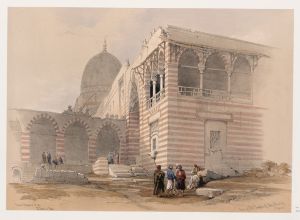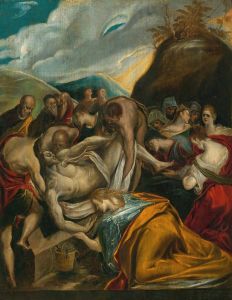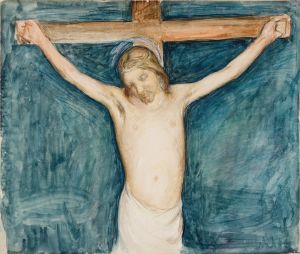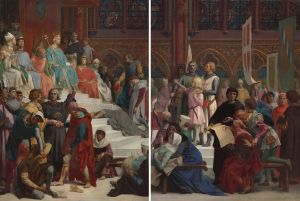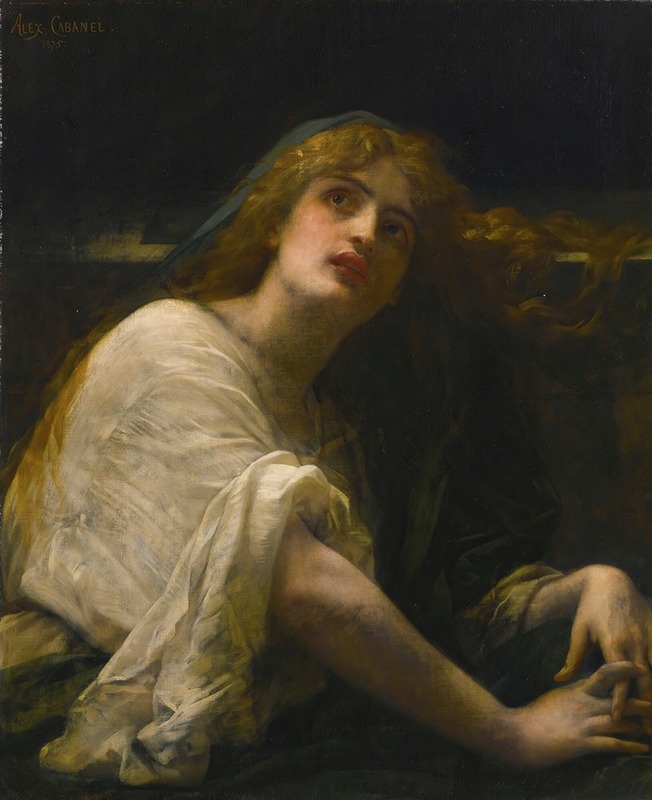
Mary Magdalene At The Tomb
A hand-painted replica of Alexandre Cabanel’s masterpiece Mary Magdalene At The Tomb, meticulously crafted by professional artists to capture the true essence of the original. Each piece is created with museum-quality canvas and rare mineral pigments, carefully painted by experienced artists with delicate brushstrokes and rich, layered colors to perfectly recreate the texture of the original artwork. Unlike machine-printed reproductions, this hand-painted version brings the painting to life, infused with the artist’s emotions and skill in every stroke. Whether for personal collection or home decoration, it instantly elevates the artistic atmosphere of any space.
Alexandre Cabanel's painting "Mary Magdalene at the Tomb" is a notable work of art that reflects the 19th-century French academic style. Cabanel, born in 1823 in Montpellier, France, was a prominent academic painter known for his classical and historical subjects. He studied at the École des Beaux-Arts in Paris and became one of the leading figures in the academic art scene of his time.
"Mary Magdalene at the Tomb" depicts a poignant moment from the New Testament, focusing on Mary Magdalene's visit to Jesus Christ's tomb following his crucifixion. This scene is derived from the biblical narrative where Mary Magdalene discovers the empty tomb and learns of Christ's resurrection. The subject of Mary Magdalene has been a popular theme in Christian art, symbolizing themes of redemption, devotion, and witness to the resurrection.
Cabanel's interpretation of this scene is characterized by his meticulous attention to detail and his ability to convey emotion through composition and color. The painting captures Mary Magdalene in a moment of profound emotion, reflecting both her sorrow and the dawning realization of the resurrection. Cabanel's use of light and shadow enhances the dramatic effect, drawing the viewer's attention to Mary Magdalene's expressive face and posture.
The painting is a testament to Cabanel's skill in rendering human emotion and his mastery of the academic style, which emphasized idealized beauty, precise drawing, and a polished finish. His work often featured historical, religious, and mythological subjects, aligning with the tastes of the French Academy and the expectations of the Salon, the official art exhibition of the Académie des Beaux-Arts in Paris.
Cabanel's "Mary Magdalene at the Tomb" is part of a broader tradition of religious art that sought to inspire and educate viewers through depictions of biblical stories. The painting not only reflects Cabanel's technical prowess but also his ability to engage with religious themes in a way that resonated with contemporary audiences.
Throughout his career, Cabanel received numerous accolades and was highly regarded by both critics and patrons. He was awarded the prestigious Prix de Rome in 1845, which allowed him to study in Italy and further develop his artistic skills. His success continued with multiple awards at the Paris Salon, and he was eventually appointed as a professor at the École des Beaux-Arts, where he influenced a new generation of artists.
"Mary Magdalene at the Tomb" exemplifies Cabanel's contribution to 19th-century art and his role in perpetuating the academic tradition. While the painting itself may not be as widely recognized as some of his other works, such as "The Birth of Venus," it remains an important example of his religious compositions and his ability to convey complex emotional narratives through art.
In summary, Alexandre Cabanel's "Mary Magdalene at the Tomb" is a significant work that captures the emotional depth and technical skill characteristic of his oeuvre. It stands as a representation of the academic art movement and its engagement with religious themes, reflecting both the artist's personal style and the broader cultural context of 19th-century France.







